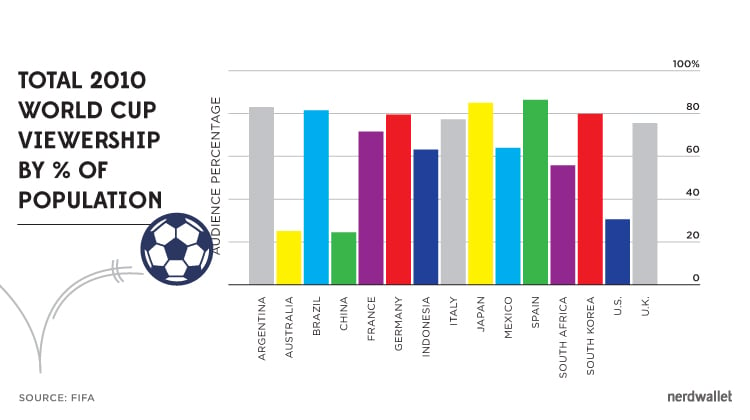Nearly half of the world s population watched both the 2010 and 2014 fifa world cup games

Nearly Half of the World’s Population Tuned In To Watch the 2010 and 2014 FIFA World Cup Games

The FIFA World Cup is undoubtedly one of the most highly anticipated and widely watched sporting events across the globe. With each edition, the excitement and interest among viewers only seem to grow. When it comes to the 2010 and 2014 FIFA World Cup games, it is estimated that nearly half of the world’s population tuned in to watch.
According to FIFA, a staggering 3.2 billion people watched the 2010 FIFA World Cup held in South Africa. This impressive figure accounts for almost half of the global population at that time. The tournament not only captured the attention of avid football fans but also drew casual viewers who were caught up in the spirit of the game.

The widespread interest in the tournament can be attributed to various factors. Football, being the most popular sport in the world, has a universal appeal that transcends borders, cultures, and languages. The World Cup brings together nations from all corners of the globe, pitting them against one another in intense competition for the prestigious trophy.
Moreover, the 2010 FIFA World Cup marked a significant milestone as it was the first time the tournament took place on the African continent. This held a special significance, attracting attention and curiosity from people around the world. The host nation, South Africa, embraced the tournament with great enthusiasm, creating an electric atmosphere that resonated with viewers across the globe.
The 2014 FIFA World Cup, hosted by Brazil, continued the trend of high viewership. Although official statistics indicate that the exact number of viewers for this edition is difficult to determine, it is estimated that the global viewership was similar to that of the previous World Cup. The passion for football in Brazil, considered the spiritual home of the sport, played a significant role in captivating viewers worldwide.
The widespread availability of television coverage, online streaming platforms, and social media further contributed to the massive viewership. In today’s interconnected world, fans had countless opportunities to follow the matches, cheer for their favorite teams, and engage in discussions online. This further amplified the excitement and made the World Cup a truly global event.
In conclusion, the 2010 and 2014 FIFA World Cup games achieved remarkable viewership that approached nearly half of the world’s population. The tournament’s universal appeal, combined with the passionate fandom of football enthusiasts and the exceptional event atmosphere created by the host nations, made these World Cups truly memorable experiences for billions of people worldwide.
Source: FIFA
Related Posts
Quick Links
Legal Stuff

